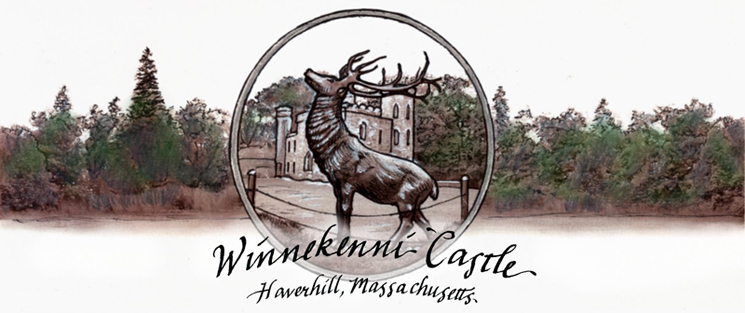
A Brief History of Winnekenni Castle
In 1861, Dr. James R. Nichols, a brilliant chemist and agriculturist bought the Darling Farm, which sat on a hill overlooking Kenoza Lake to use for his experiments with chemical fertilizers. In 1872 he visited England and was inspired by their long-standing stone structures. He returned with an idea to build a summer home from native boulders and rocks. He was quoted at the time as saying ... “we desire to prove to farmers and others in a practical way the value of boulder rocks (so common on almost every New England Farm) as building materials.” Construction began in 1873 and was completed two years later in 1875. He called the building Winnekenni Castle and the surrounding farm Winnekenni, an Algonquin Indian word for “Very Beautiful!”
The Haverhill Gazette in 1875 described the interior of the castle at the time. Below is a brief summary of what the castle looked like then.
- The original structure contained a gothic door opening up to a spacious Grecian Drawing Room, a Pompeian style dining room, Roman-tiled, black-walnut finished library, in addition to a kitchen, sleeping room, storeroom and laundry.
- A spacious stairway opened up to a hall on the second story that had entrances to nine bedrooms and a “bathing room.”
- Access to the roof from the four towers.
- From the roof of the castle at the time was a view of seventeen surrounding towns, three counties, three states, as well as Mt. Monadnock, Mt. Agamenticus in Maine and the ocean.
- It is easy to see why Dr. Nichols chose this area for his summer residence.
In 1885 due to poor health Dr. Nichols sold the castle and 27 acres of land to his cousin William Webb of Salem, MA, who used the castle as a summer home for ten years. In 1895 Mrs. Annie sold the property to the City of Haverhill. It was at that time that the castle and grounds merged with the Haverhill Water Department, and more recently with the Winnekenni Foundation.
The castle walls are four feet thick and indeed the castle has a sound structure. It’s elaborate Victorian interior was destroyed by fire in 1969. However the outside has withstood the test of time and was remodeled by the Winnekenni Foundation with the help of students and faculty from Whittier Regional Technical High School.
Today, this favorite Haverhill landmark is a valuable part of the community, still serving as a recreational park and offering, concerts, plays, workshops, craft fairs, Halloween parties, fundraisers and so much more.
Photos and information provided from "The Story of Winnekenni" by Donald C. Freeman
Haverhill Public Library Press and Buttonwoods Museum

see also: